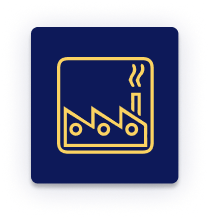- csem@csem.com
- (888)701-2736
- Special Treat
- What's New
JUST IN TIME
SAFETY TRAINING
24/7
MULTIPLE
LANGUAGE OPTIONS
888-701-2736
JUST IN TIME
SAFETY TRAINING
24/7
MULTIPLE
LANGUAGE OPTIONS
888-701-2736
SAFETY TRAINING
24/7
MULTIPLE
LANGUAGE OPTIONS
SAFETY TRAINING
24/7
MULTIPLE
LANGUAGE OPTIONS

Over 190,000 illnesses and 50,000 deaths occur annually in the United States as a direct result of chemical exposure in the workplace. OSHA cites a paper published in 2006 by the California Policy Research Center titled “Green Chemistry in California: A Framework for Leadership in Chemicals Policy and Innovation” as the source of these frightening facts on the web page devoted to chemical substitution.
The process of systematically setting goals and priorities to reduce hazards, developing a chemical use inventory, evaluating alternatives, identifying preferable alternatives, and putting those alternatives into action is referred to as substitution planning. This course sheds light on importance of substitution methodologies to eliminate or reduce exposure to products that are toxic or pose additional hazards by replacing them with alternatives that pose a lower risk.
The goal of this course is to introduce students to a seven step program that businesses can employ to reduce or eliminate chemicals of concern.

training requirements of 29 CFR 1910.120(e)(3)(i) defined by Federal OSHA HAZWOPER for general industry.

training requirements of 29 CFR 1926.65(e)(3)(i) defined by Federal OSHA HAZWOPER for construction sector.

HAZWOPER training requirements for EPA and State OSHA guidelines.
The audience of this course are all those workers involved in steel erection operations happening in
Single-story buildings
Multi-story buildings
Bridges
Other structures which require steel erection for any purpose.
At the completion of this training, students will be able to learn:

Introduction
Identify the Hazardous Chemicals
Plan the Alternatives
Define Action Steps
Define Timeline
Identify Weightage of Hazardous Chemicals
Substitution Tools